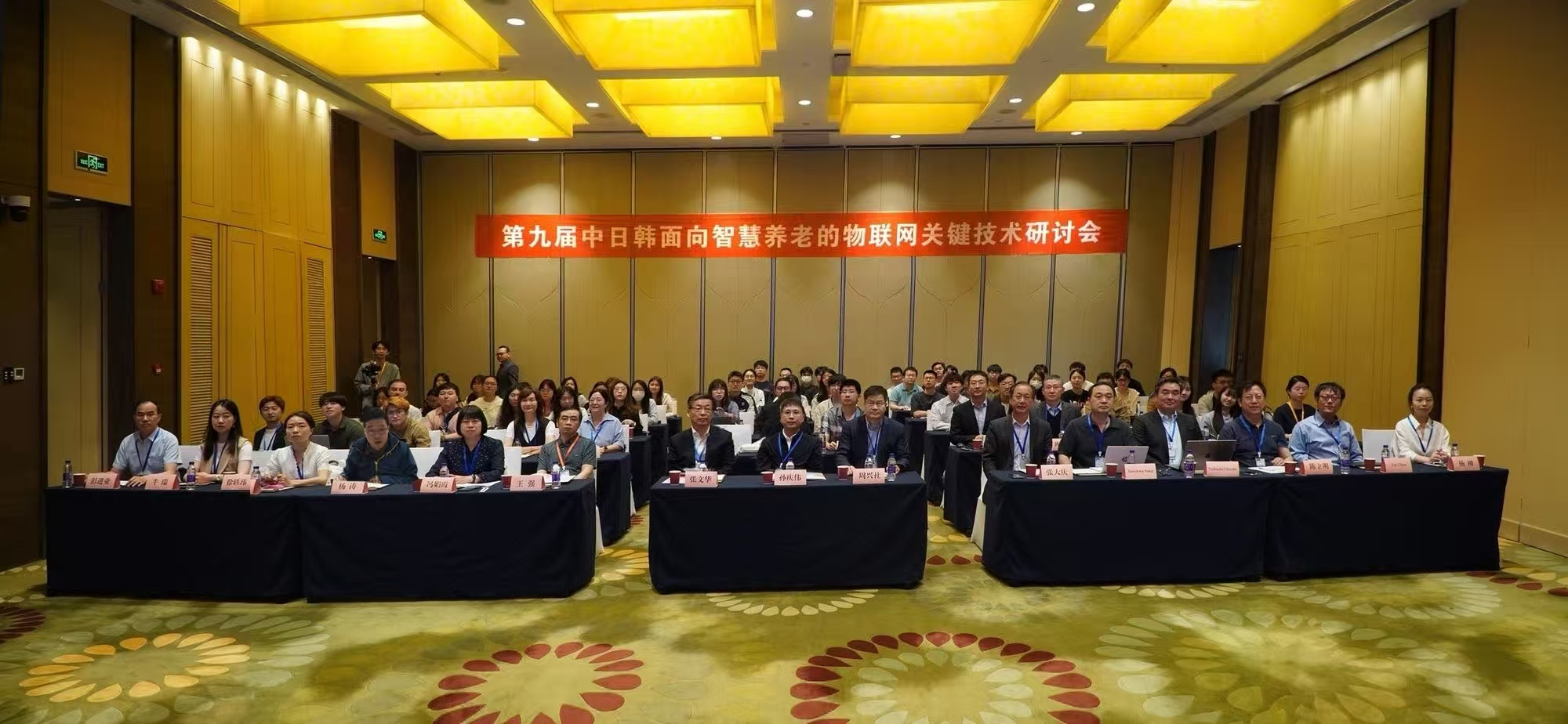On May 7, 2025, the “9th China-Japan-Korea Symposium on Key Technologies of IoT (Internet of Things) for Smart Aging,” guided by the Department of Science and Technology of Shaanxi Province and hosted by NWU, with co-organization from the Shaanxi Science and Technology Exchange Center and Shaanxi International Talent Exchange Association, convened in Xi’an. The conference focused on academic exchanges and technical discussions around topics such as IoT sensing technology, intelligent health monitoring, R&D of aging-friendly smart devices, and applications of big data and AI in elderly care. It brought together over 80 experts and scholars from China, Japan, and South Korea, including more than 20 researchers from Japan and South Korea.
Keynote speeches were delivered by Professor ZHANG Daqing from Peking University (Academician of the European Academy of Sciences), Professor Junehwa Song from the Korea Advanced Institute of Science and Technology (KAIST), and Associate Professor Tadashi Okoshi from Keio University (Japan) on themes such as “Wireless Sensing-Based Home Care Systems,” “Innovative Applications of IoT Technology in Senior Health Management,” and “Human-Computer Interaction and Improvement of Quality of Life for the Elderly.” These speeches provided new perspectives and solutions for smart aging from multiple dimensions, including technological innovation, system construction, and social impact.
In two parallel sessions, young scholars from institutions such as Waseda University, Keio University, Osaka University, Toyo University (Japan), KAIST, Yonsei University (South Korea), Southeast University (China), and NWU—including Selahaddin HONI, Hayao URATA, Jaeho JIN, and Zihan ZHOU—shared their insights. Participants showcased research breakthroughs and sparked new collaboration ideas through interdisciplinary dialogues, offering diverse technological pathways to address global aging challenges.
The symposium highlighted cutting-edge achievements in IoT-enabled smart aging, further deepening international cooperation and technical exchange. Through interdisciplinary conversations, experts proposed innovative solutions to aging challenges, laying a solid foundation for future collaborative innovation and practical application of smart aging technologies.
